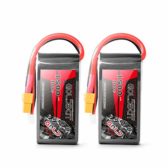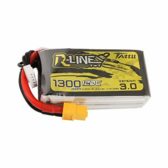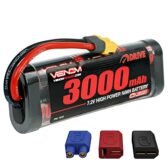The Best Drone Batteries in 2021
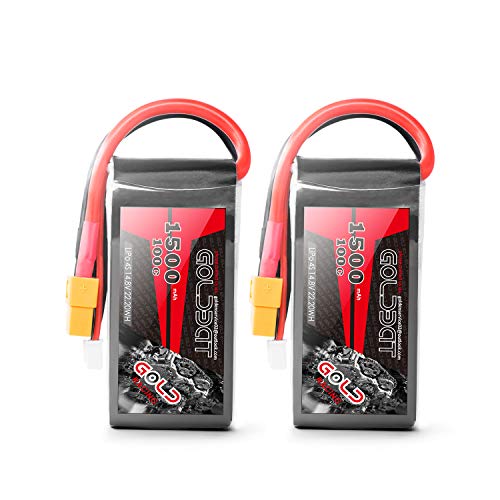
GOLDBAT 4S 1500mAh
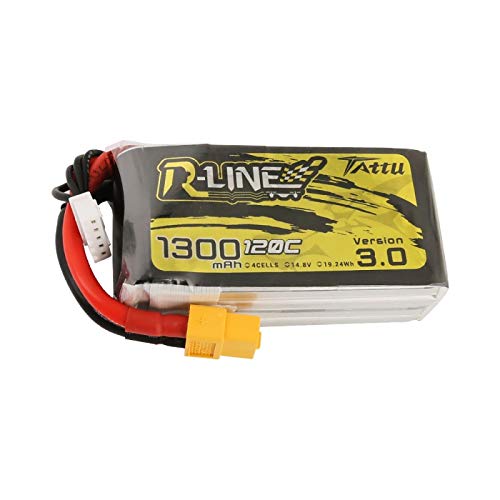
TATTU 4 Pack 1300mah
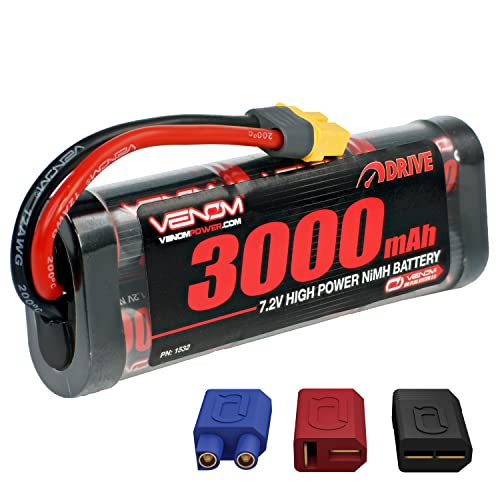
Venom 7.2V 3000mAh
A battery might look simple, and it is one of the easiest parts to install when building a drone. But there is a lot of chemistry included in a battery, and there should be a lot of thought placed when trying to pick amongst the best drone batteries available today.
Unlike many other components, just picking out the biggest number is not applicable in this situation. Biggest batteries are also the heaviest, and picking them up in the air with the drone will require more power.
It’s important to note that we’re discussing actual batteries here, usually for those building or customizing their own quadcopters. We have a separate guide on the drones with the best battery life.
When picking out a drone battery, we are looking for an optimal balance between capacity, size, weight, and discharge size. Also, being able to recharge your battery in a reasonable time frame is something to think about.
If we have a finished drone there will usually be some reference to the size and type that you need. But, if you are building your own drone, some math will be required.
While most batteries presented will work the same concerning each other, they will not yield the same results depending on where you are. Different altitudes, temperatures, as well as the number of cycles on the battery will change its efficacy.
When looking at the specifications, the number will depict how the battery works at room temperature when it is brand new. You should chalk this up to be a ‘best case scenario’.
If you are planning to build your drone, you should provide enough leeway and expect less than ideal results. Generally, lowering your expectations around 20% will get you the exact calculation that you need.
Finally, there is a lot of high-quality products to pick from, and that gives both drone constructors and drone pilots a lot of advantages. There is nothing wrong with picking out several models and seeing which one fits your current piloting needs.
Best Drone Batteries 2021
We may receive compensation on qualifying purchases via our links. This does not change how we review items. For more information, please read our affiliate disclosure.
Balance is key when you are looking for the best drone batteries and the Goldbat 4S reaches near that ideal middle ground.

- Charge: 14.8V @ 100C
- Weight: 182g/6.45oz
- Connectivity: XT60 + JST-XHR
- Recharge Speed: ~120 min
- Design: Block
The battery has a solid capacity, reaching 1500 mAh at a full charge. This will allow even larger drones to have a good air-time and excel in this regard when it comes to smaller drones. The numbers come to about 200Wh/kg, which is an excellent ratio.
The weight is significant, but improved compared to anything else we have seen in the batteries of similar capacity. The 6.45 ounces allow for the construction of lightweight drones that don’t need FAA registration.
As for the connectors, you will have a choice between the XT60 and the JST-XHR. Combined, these two cover most of the platforms available in DIY kits. Additionally, the XT60 can be combined with the adapter without any loss in power.
With the discharge rate of 100C, you can make a very good racing drone by using this battery. And if speed is not what you are looking for, the power versatility can make a video drone that is very stable even in windy conditions.
Finally, the warranty on this battery ensures that any bad product can be returned and exchanged for a new battery without additional costs. This improves the value of the product and ensures that your wallet will not bleed on DOA components.
+ Pros
- Cons
This battery is balanced to allow for just enough capacity to propel the drone at amazing speeds for a couple of minutes. Winning the race is the priority here.

- Charge: 14.8V @ 120C
- Weight: 150g
- Connectivity: XT60 / JST-XHR
- Recharge Speed: ~120 min
- Design: Single-cell Block
Right of the bat, this Tattu battery is unapologetically a racing drone battery. You won’t get a lot of flight time with it, but that time will be spent going really fast.
The discharge speed of the Tattu is rated at 120C, which is roughly 30% more than an average drone battery when it comes to performance.
If you plan to push only the motors and antenna, you might expect up to 10 minutes of power with the 1500mAh battery, but most racing drones today use a fast frame rate FPV camera as well. With a camera, this falls to about three to five minutes.
Finally, the battery is very lightweight, standing at less than 5.3 ounces, allowing more than enough leeway in terms of weight for different constructs to be made while still making the drone fast and maneuverable.
+ Pros
- Cons
With 3000mAh this battery can keep your drone flying for quite a while. It may be slow, but it is steady and durable.

- Charge: 7.2V
- Weight: 343g/12.1oz
- Connectivity: UNI Land Plug with XT60, Traxxas, Deans, and EC3 plug
- Recharge Speed: ~180 minutes
- Design: 6-cell tube
Now we are stepping into the big boy territory.
The Venom Drive battery can thank its addition to the rank of drone batteries to new brushless motors that can allow for a stable flight with only 7.2 volts of power. In larger cases, you can even connect them in a series to allow for enough power.
But, if you are looking for speed, you will need to look elsewhere. The sheer weight of the battery and the low power rating won’t allow the drone to race any time soon.
Where this construction excels is in durability, as it has more than enough juice inside to keep the drone flying for more than half an hour. For someone building a photography drone, this feature might be priceless compared to the drawbacks.
Finally, Venom has remembered that not everyone has the same connector and comes with four different adapters, making this large battery fit in almost any combination of components.
+ Pros
- Cons
High capacity but lightweight, these batteries are made for prolonged pleasure in your hobby.
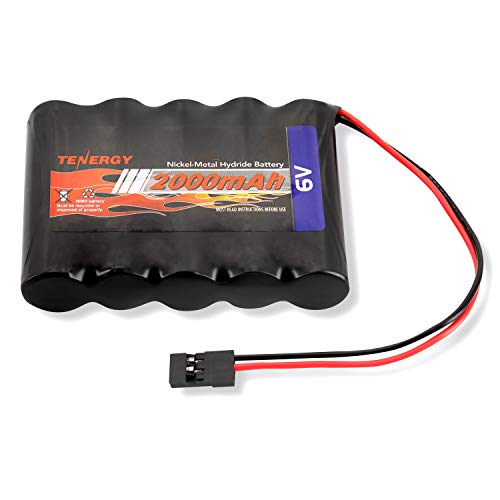
- Charge: 6V
- Weight: 140g/5oz
- Connectivity: Hitec connector
- Recharge Speed: ~100 minutes
- Design: 5-cell Plate
This is stripped down from all unnecessary parts making the end result ideal for novice drone constructors.
The nickel cells places inside are clearly visible, showing how much is stripped for weight on this product. Even with such a high capacity, it is lighter than most other batteries. This will allow for a lot to be added before you pass the FAA registration mark.
The power discharge is nothing to write home about, capping at 25 amps, but it is more than enough to keep a small drone with good motors in the air for a long time.
Additionally, this battery can be charged quite quickly compared to its capacity. In ideal settings, you will need less than 5 batteries to keep the drone flying almost perpetually. And as it has a very reasonable price, that is not a difficult feat to accomplish.
Finally, the flat design allows for multiple different configurations and placements. This versatility will make the life of any drone constructor much easier.
+ Pros
- Cons
While not having the biggest capacity, this 1300mAh battery from Ovonic is a favorite when it comes to smaller FPV drones.
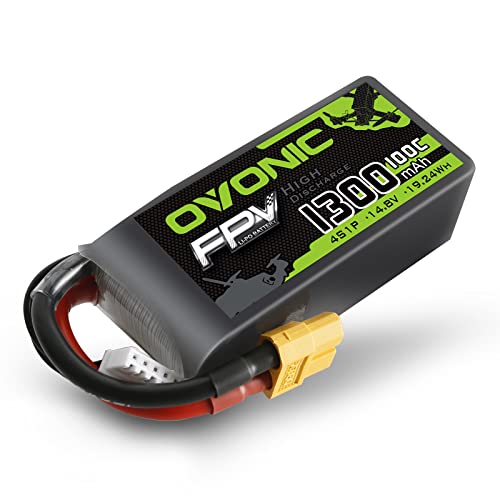
- Charge: ~14.8V @ 95C
- Weight: 172g/6.07oz
- Connectivity: XT60
- Recharge Speed: ~90 min
- Design: Block
The 14.8 volts of current provided is more than enough to power four motors and an FPV camera such as a GoPro or some other self-contained device. The end result may be a slightly lower flight speed, but a lot of fun in the meantime.
The design is compact and very adaptable to different drone designs, including several existing consumer drones. Additionally, several DIY kit manufacturers recommend using this battery in their designs.
For anyone making a small but versatile drone, this battery can be a lifesaver, as it provides a lot of value for a very competitive price.
Also, while there are not that many boards with the XT60 connection, this plug allows for virtually lossless transfer by using adapters, giving you even more options when constructing.
Finally, while the weight of this battery is significant, it may still be combined with drones that are lighter than 500 grams or 18 ounces, making it possible to make a drone that you don’t need to report to the government.
+ Pros
- Cons
It is very hard to find a battery with such a high capacity that it can handle drone power requirements. But, with 7.2 volts exiting the AWANFI you will be able to keep your drone stable and flying for ages.
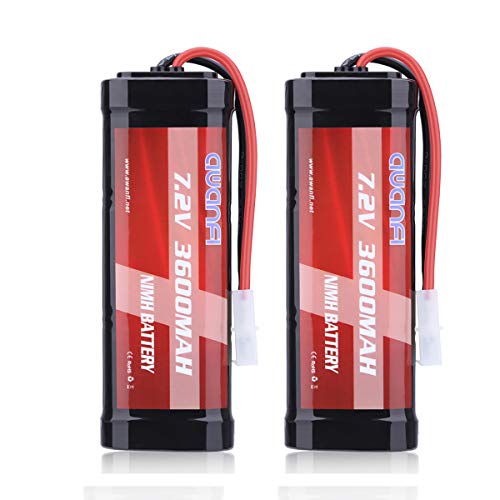
- Charge: 7.2V @ 90C
- Weight: 375g/13.23oz
- Connectivity: Tamiya
- Recharge Speed: ~360 min
- Design: 6-cell Tube
The battery is quite heavy, passing 13 ounces on its own, but it also has a capacity that dwarves almost anting else. It is made to accommodate a slightly larger drone, possibly carrying two of these at the same time, which is why you get a 2-pack.
The power discharge is not very fast and you won’t be able to get a lot of speed from a drone carrying this battery. But, with a good and efficient brushless motor, you can easily lift both the battery and much more on your drone.
In the end, the main feature of this battery is the capacity, holding almost double of what is usually found inside drone power sources. For those who need their drone to fly for a long time, regardless of the reason why they will want to consider the AWANFI 3600mAh battery.
+ Pros
- Cons
Quick Buyer’s Guide for Best Drone Batteries in 2020
As is the case with most industries today, the consumer is almost spoiled for choice. There are a lot of products, and it is harder figuring out which one is the best for you than finding an overall good product.
Additionally, batteries are always advancing and new versions are hitting the market often. Sometimes, a new battery with lower capacity can perform better than an old one that wasn’t as efficient.
Drone pilots will need to think about what they are expecting as far as flight time and strength goes and start their search from that point. Balancing the weight of the battery with its capacity and discharge speed is crucial when flying racing quads, or need more time for your aerial photography.
Finally, you should always check how many cycles will any battery sustain. It is often better to pay a bit more for a durable battery that will last for hundreds of charges than to go cheap and need to change them every few months.
What to Look for in a Drone Battery?
The first number to look at any battery is the amperage, which will show the total amount of power the battery has. You can match this with the power of the motor to see how quickly they will drain the juice.
A fast second are weight and discharge speeds. Batteries are quite dense and often make half of the weight of the entire drone.
You will need to balance this weight with how much your drone can carry. It will often be necessary to sacrifice flight time if you want the drone to pick up any speed. That is why racing drones can rarely fly more than a couple of minutes and have quickly changeable batteries.
The discharge speed is equally as important as the weight, as it will show how much power your drone can get in any given moment. This will depend on how the battery is made and connected and is crucial for bigger drones.
Once you know how strong is the battery, you will need to know how fast can you recharge it. This is not a crucial feature for the flight itself and is often sacrificed spec-wise, but it will change how and where you fly your drone.
Additionally, if your battery takes hours to recharge and you need more time, you will want to pack a couple of extra batteries to take for your trip.
And finally, there is the question of design. Aesthetics aside, the design of the battery will often influence the design of the whole drone. Always make sure than the battery you are picking out can fit in the chassis of the aircraft.
Mind the Plug
For reasons unknown, there are multiple different battery connectors that won’t fit into each other. Unless you have and can fit in adapters, you will need to find a battery with the exact connector to your drone.
For propriety batteries, this means that most 3rd party products will not fit in the same spot or connect adequately. While it is possible to find replicas online, it is generally much safer to purchase from the same manufacturer.
And for those building their drones, fitting the exact connector is crucial for both using and charging the battery.
There is not a significant difference between connectors when it comes to transferring power, which was the case before, but you should expect a slight loss if you are using an adapter.
Is More Always Better?
If we are talking about terrestrial vehicles more is almost always better. The biggest battery-powered four-wheeler you can get is called a Tesla and is quite a comfortable car. Sadly, it is different when you want to fly.
Batteries are nowhere near the efficiency of modern diesel motors when it comes to their weight to power ratio. For batteries, you will need to balance your power with how much you can fly with, and often sacrifice flight time for speed and maneuverability.
The benefit is that batteries usually scale equally to their weight. New brushless motors create more pull per rotor, giving you an opportunity to give each motor its own battery, with less capacity and more discharge strength.
A smart constructor will notice how much of the lift provided they can use to store their batteries, creating even more lift. While this exchange is not infinite, it is used to create some of the best drones on the market today.
Amps vs. Weight
Because of the differences in the production of batteries, as well as the components that come with them, there is no clear math when it comes to the ratio of amps to grams. But there are some possible guidelines.
Ideally, you would want to have this difference as big as possible in favor of power. That is provided that the discharge speed is enough for your needs.
Currently, the best drone batteries on the market will have around 15/1 ratio when it comes to mAh to grams. This means that every 1000 mAh of power will weigh about 70 grams or 2.5oz.
The larger the battery the greater the difference, which is why larger drones usually have a longer flight time than their smaller counterparts. If your drone can carry a larger battery, it probably should.
Finally, even for smaller models, the ratio should never fall under 10/1, meaning more than 100 grams for every amp of juice.
Connectivity
Currently, there are more than a dozen types of connectors depending on the battery, manufacturer, region, as well as intended use. While they do offer different capabilities, the difference in modern batteries is rarely noticeable.
The most common type of connector for drone batteries is the ‘Futaba’, that offers two currents and a signal wire to be connected to the device. This will often be interchangeable with the ‘Hitec’ connector but lacking the ‘rib’ on one side.
Otherwise, the connector can be changed to a JST-XH 2.5mm pitch connectors that bring much more versatility.
Regardless of the type, you need to be mindful of your connector to match between the drone’s motherboard and the battery, allowing for an easy flow of power between the two.
Discharge Speed
Deciding on the discharge speed of your battery might seem like a tricky endeavor, but it is not. The amount of amps you want is informed by the motherboard, the motors, and the connectors.
While you can max out the discharge to your lowest component, it is always better to give everything a bit of leeway in case there is an issue. This way you will prevent short-circuiting the drone and producing a critical failure.
For most drones, the advised discharge speed will be between 25 and 35 amps per battery. If you are using brushless motors this is more than enough to reach some serious speeds.
An experienced constructor may find parts that will take in more amps. But, the difference between the capacity and discharge passes the optimal at that point.
Combined with the weight of the battery and the lift provided by rotations you won’t get much more usable power in the motors this way.
Recharge Speed and Cycles
Not to enter the chemistry of how different types of batteries work, there is a limited number of cycles that a battery can be charged and discharged. At some point, the cathodes and anodes become so saturated that there is no more exchange of ions going on.
Most battery manufacturers have opted to allow a bigger capacity and discharge speed, sacrificing recharge speed in the process. This is why a drone battery often needs hours to charge back to full.
If you are making a DIY drone, it is often a better idea to have a detachable battery. Not only can you have an easier time charging multiple batteries at the same time, but you can also exchange the battery and keep flying while the others are charging.
Temperature is Essential
Thermodynamics rules the universe we inhabit and it would be silly to think that they don’t make the difference when making and flying drones. For batteries, the surrounding temperature will make a lot of difference in how they react.
Ideally, you will want to keep the temperature of the battery as low as possible without the fluids inside freezing. This is not hard when the drone is flying, provided that the components are not logged together.
If the temperature rises the battery will start dishing out more power as the ions are agitated further, but that will be at the expense of durability.
If you plan to make a racing drone than you might want a ‘hotter’ battery regardless of the price. But, in other cases, this option might make all of the components last less and end up in a critical failure at some point down the line.
Pick up a Few Extra
In the case of consumer drones, it is usually quite expensive to buy and hold multiple batteries. Some drones don’t even have a removable battery making this a non-issue.
But, the times are changing and an increasing number of manufacturers allow for changeable batteries.
Also, if you are constructing your own drone you should allow for easy access to the battery and a way to quickly swap between components. This will make the ‘trial and error’ cycle faster and allow you to test out multiple batteries in different conditions.
Compared to other drone components the price of the battery is not that much, and having a few extra batteries will allow both for more options and more fun.
Conclusion
Batteries may seem just as another component, but without them, your drone will never fly. Choosing from one of the best drone batteries will increase your drone’s power, flight time, and your fun as the pilot.
Thankfully, there are a lot of good options on the market, with new ones coming out all the time. It makes it certain that you will find the best drone batteries for just the type of drone you want to make.
And while we wait for the ingenious John B. Goodenough to invent an even better battery, the batteries we have today will be more than good enough for any drone constructor and pilot to use.

